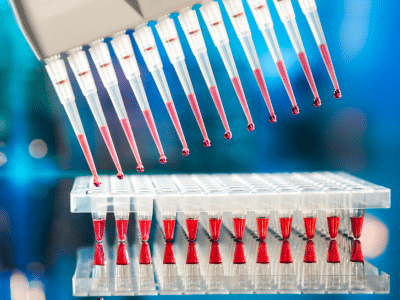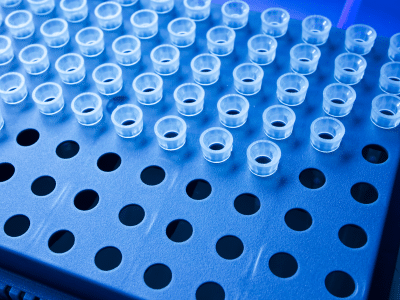The pandemic generated huge amounts of additional infectious waste. PPE, collection devices, reagents, have had to be absorbed into waste management systems around the world, generating additional production and destruction of plastic containers.
Global Analysis of Health Care Waste in the Context of WHO COVID-19: the tipping point for the RHIW stream
The World Health Organization published a report in February 2022 – Global Analysis of Health Care Waste in the Context of COVID-19: Status, Consequences and Recommendations, which identifies the major issues surrounding this problem in the light of the COVID-19 pandemic.
87,000 tons of Personal Protective Equipment (PPE), for example, were purchased between March 2020 and November 2021 throughout the world by the United Nations. 87,000 tons disappeared into plastic DASRI drums, and as many swabs, tubes and other vials.
140 million test kits or 2600 tons of non-infectious plastic waste 731,000 liters of chemical waste or a third of the volume of an Olympic swimming pool were provided by the UN – just the UN
8 billion doses of vaccine were used worldwide, generating an additional 144,000 tons of waste (syringes, needles and needle containers).
However, around the world, nearly one third of health care institutions (and up to two thirds in developing countries) are unable to manage the waste produced by their activities. This management difficulty has serious consequences for medical staff, who are exposed to AES, pathogens, or burns. Perhaps less obviously, it exposes the general population near landfill sites to infectious risks and air pollution from the incineration of hazardous waste.
Hazardous waste (HW): Let’s take responsibility !
The solutions are known and are shared in the WHO report :
- Give preference to PPE packaging made of recyclable and/or biodegradable materials
- Re-localize PPE production to reduce transportation
- Invest in autoclaving rather than incineration methods for waste disposal
- Deploy reverse logistics to better centralize waste management and invest in the recycling industry to find new solutions for reusing plastics.
- Adopt purchasing practices for PPE or DASRI drums/cartons/containers that take into account environmental impacts. Thus, a virtuous supply and recycling chain (local, with plastics made from recycled material, and eco-designed), coupled with education on safe and rational use, makes it possible to reduce the environmental impact of public health care, and to limit the environmental cost, which, from a systemic point of view, justifies a higher purchase cost at the start of the chain.
The WHO report is very timely :
The population expects a little more from the hospital sector in particular, and intends to protect its health in the short term without deteriorating that of future generations, which will be affected by the carbon footprint that we generate today, the waste that is currently filling our landfills, and the totally uncontrolled proliferation of plastic waste.
“Waste management is an integral part of the supply chain, due to the use and expiration of healthcare products. Inadequate and inappropriate management of healthcare waste can have serious consequences for public health and the environment and a significant impact on human and global health.”
Dr. Mandeep Dhaliwal, Director of HIV, Health and Development at UNDP
Eco design, eco responsibility, introduction of augmented and virtual reality in the support of staff: LABELIANS is committed !
Laviedulabo.fr supports the conclusions of this report, and the commitments of LABELIANS in this perspective are progressively taking shape in concrete terms – By the way, did you know that LABELIANS distributes today more than 3/4 of the DASRI made available in public health institutions ?
It is therefore our responsibility to act :
- Through its partnership with KOLMI HOPEN, LABELIANS offers you a French chain from production to distribution for all the PPE you may need in the laboratory
- LABELIANS offers a complete range of collectors, from the portable collector to the large volume collector with Sharpsafe® 5th Generation compatible media which reduces from 57% to more than 70% of the carbon footprint compared to Sharpsafe® 4th Generation whose tanks are 100% recycled materials certified ISO 16103:2005
- LABELIANS lines innovates with ECO CONCEPT, a range of drums and cardboard boxes for hazardous waste whose design reduces the carbon footprint of your hazardous waste purchases by a quarter, and whose manufacture is based on 30 to 60% recycled plastic. ISO 16103 :2005. A range that integrates LABELIANS experience technology to support laboratory technicians, nurses, biologists and all those who are in contact with infectious waste and can improve its management.
Let us know by filling out this short form, we will be honored to build with you a future more respectful of the health of future generations.




